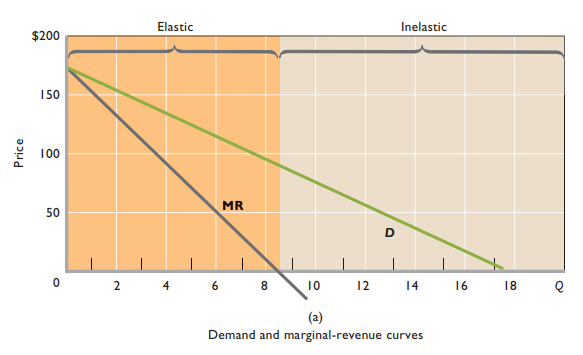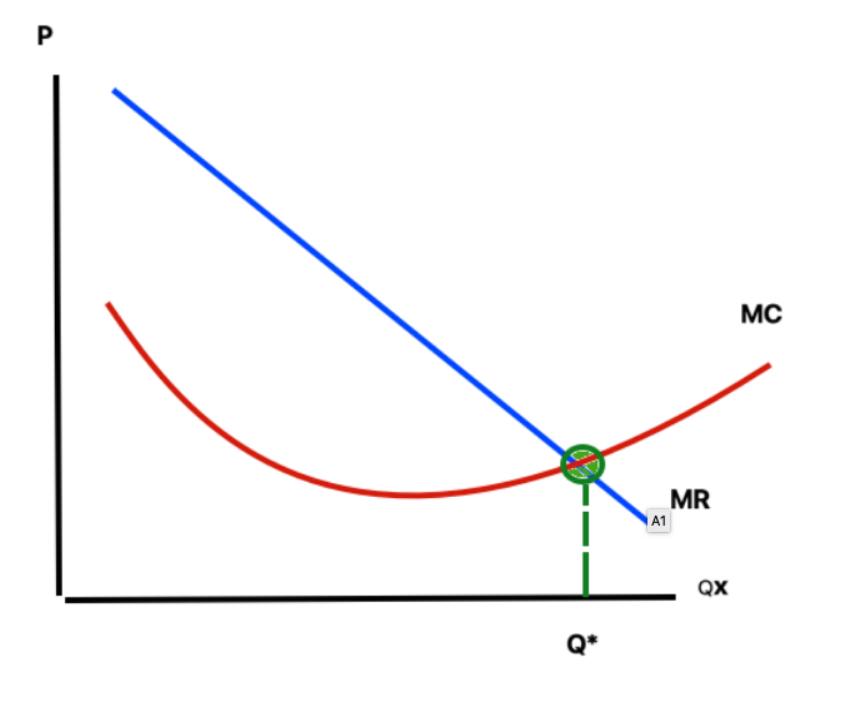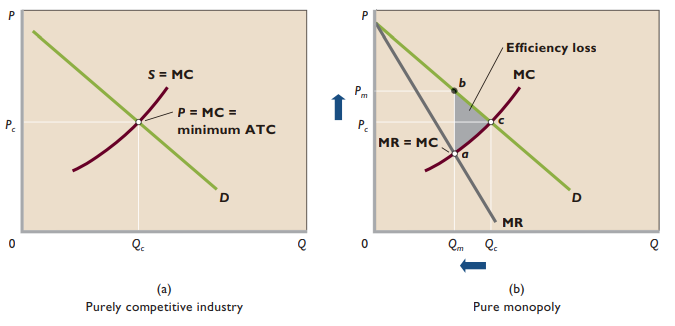Chapter 10: Pure Monopoly
Pure monopoly - Single firm is sole producer of product w/ no close substitutes
Single seller
No close substitutes
Price maker - Can change price of product
Blocked entry - No potential competitors can enter industry
Non-price competition - Monopolists that have standardized products engage mainly in public relations advertising
Ex. Government-owned public utilities, professional sports teams, etc.
Barriers to entry - Factors that prohibit firms from entering industry
Block potential competition
Exists in market structures w/ monopolistic behavior
Economies of scale
Produce more → Gets cheaper to produce
Caused by modern technology
Entry barrier that protects from competition
Legal barriers to entry
Patent - Exclusive right to use/allow another to use invention
Protects from rivals
Monopoly for life of patent
Funds R&D
License
Limits entry into industry/occupation
Ownership of resources
Owns/controls specific resource → Can prohibit entry of other firms
Pricing
Slashing prices + increasing advertising → Rivals cannot succeed
Monopoly demand
Monopolist’s demand curve = Market demand curve
Down-sloping demand curve
Marginal revenue less than price
Each additional unit of output sold increases total revenue by an amount equal to its own price less the sum of the price cuts that apply to all prior units of output
Total revenue increases at diminishing rate
MR curve below demand curve
Price maker
Change market supply → Influence product price
Sets prices in elastic region of demand
Always avoids inelastic portion of demand curve

MR = MC
Vertical line from quantity where MR = MC to demand curve = Price that monopolist charges

No supply curve
Seeks max total profit, not max prices
Seeks max total profit, not max unit profit
No guaranteed profit
Not immune to changes in consumer tastes or reduced product demand
Price greater than average variable cost → Continues to produce instead of shutting down
Economic effects
Neither productive nor allocative efficiency
Underallocation of resources
Sum of consumer surplus + producer surplus less than max

Income transfer
Owners of monopolies benefit at cost of consumers
Increases income inequality
Cost complications
Sometimes only natural monopoly can achieve lowest long run average total cost
Simultaneous consumption - Product’s ability to satisfy large # of consumers at same time
Network effects - Value of product to each user increases as total number of users increases
X-inefficiency - Firm produces output at higher cost than necessary to produce
Caused by lack of competitive pressure
Rent-seeking behavior - Activity designed to transfer income/wealth to a firm/resource supplier at someone else’s expense
Pure monopolists are not technologically progressive
Assessment + policy options
Monopolies are problems
New technologies can destroy monopolies
New products circumvent patent advantages
Possible actions
Gov’t files charges under antitrust laws
Gov’t regulates monopoly’s prices + operations
Society ignores it
Price discrimination - Selling a specific product at more than one price when the price differences are not justified by cost differences
Conditions
Monopoly power
Market segregation
No resale
Enhances profit
Regulated monopoly
Multiple firms would incur higher average total costs than 1 firm
Socially optimal price - Allocative efficiency; P = MC
Fair-return price - Permits fair return to firm owners; P = ATC
 Knowt
Knowt
